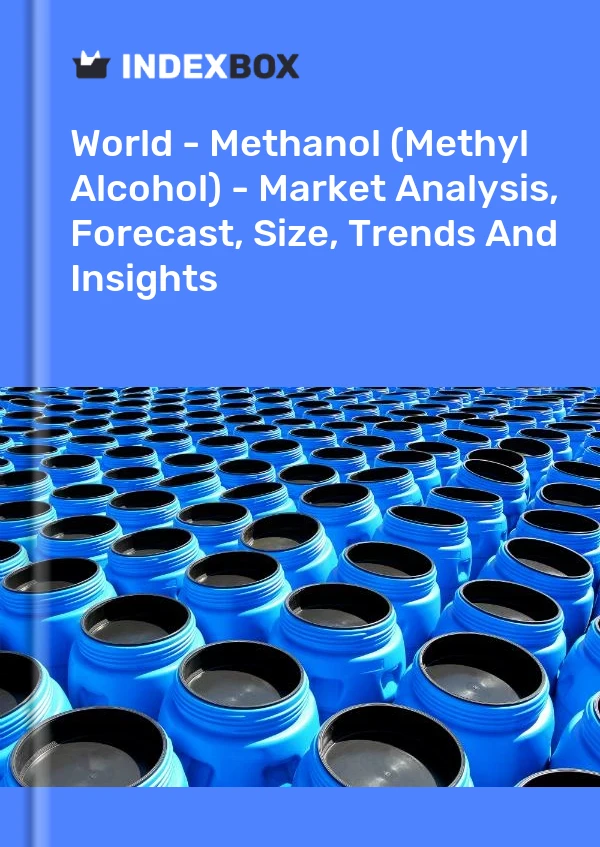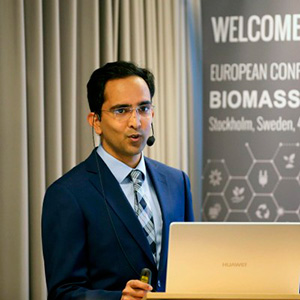
World - Methanol (Methyl Alcohol) - Market Analysis, Forecast, Size, Trends And Insights
Get instant access to more than 2 million reports, dashboards, and datasets on the IndexBox Platform.
View PricingRecovered Methanol
Recovered methanol is a form of methanol that has been extracted from various waste streams or byproducts. Methanol is a colorless, flammable liquid that is primarily used as a fuel, solvent, or antifreeze. It is produced through a chemical synthesis process that involves the reaction of carbon monoxide and hydrogen. The production of methanol is an energy-intensive process and its production has been linked to high levels of carbon dioxide emissions which makes it an important chemical to recover.
One common source of recovered methanol is from the waste streams generated from various industrial processes. Several industries such as petrochemical, paper, and semiconductor manufacturing generate gallons of waste water and byproducts that contain high levels of methanol. Recovering methanol from these waste sources is cost-effective and environmentally friendly as it reduces the amount of waste generated and the need for virgin methanol.
Recovered methanol is also used as a renewable and alternative energy source for fuel. Methanol is a highly efficient fuel and can be used to power various applications such as vehicles, power generators, and industrial boilers. The use of recovered methanol as fuel reduces greenhouse gas emissions, promotes energy security and diversification, and provides a cost-effective alternative to traditional fuels.
Recovered methanol also has a range of important applications in the chemical industry. It is used as a solvent in the production of various chemicals such as formaldehyde, acetic acid, and methyl tertiary-butyl ether (MTBE), a gasoline additive. Methanol is also used as a feedstock to produce other chemicals such as plastics, coatings, and adhesives. Recovering methanol from industrial waste streams or other sources reduces cost, saves energy, and reduces the carbon footprint of chemical production.
In conclusion, recovered methanol is a valuable and versatile resource that can be obtained from various waste streams or byproducts. Recovering methanol reduces the amount of waste generated, reduces the need for virgin methanol, and provides a cost-effective and renewable alternative to traditional fuels and chemical feedstocks.
Join Us at HANNOVER MESSE 2024
Don’t miss your chance to connect with us directly. Schedule a personal meeting to dive deeper into how solutions.
Hall 002, Stand C10. 22 - 26 April 2024 | Hannover, Germany

This report provides an in-depth analysis of the global methanol market. Within it, you will discover the latest data on market trends and opportunities by country, consumption, production and price developments, as well as the global trade (imports and exports). The forecast exhibits the market prospects through 2030.
Product coverage:
- Prodcom 20142210 - Methanol (methyl alcohol)
Country coverage:
Worldwide - the report contains statistical data for 200 countries and includes detailed profiles of the 50 largest consuming countries:
- USA
- China
- Japan
- Germany
- United Kingdom
- France
- Brazil
- Italy
- Russian Federation
- India
- Canada
- Australia
- Republic of Korea
- Spain
- Mexico
- Indonesia
- Netherlands
- Turkey
- Saudi Arabia
- Switzerland
- Sweden
- Nigeria
- Poland
- Belgium
- Argentina
- Norway
- Austria
- Thailand
- United Arab Emirates
- Colombia
- Denmark
- South Africa
- Malaysia
- Israel
- Singapore
- Egypt
- Philippines
- Finland
- Chile
- Ireland
- Pakistan
- Greece
- Portugal
- Kazakhstan
- Algeria
- Czech Republic
- Qatar
- Peru
- Romania
- Vietnam
+ the largest producing countries
Data coverage:
- Global market volume and value
- Per Capita consumption
- Forecast of the market dynamics in the medium term
- Global production, split by region and country
- Global trade (exports and imports)
- Export and import prices
- Market trends, drivers and restraints
- Key market players and their profiles
Company coverage:
Reasons to buy this report:
- Take advantage of the latest data
- Find deeper insights into current market developments
- Discover vital success factors affecting the market
This report is designed for manufacturers, distributors, importers, and wholesalers, as well as for investors, consultants and advisors.
In this report, you can find information that helps you to make informed decisions on the following issues:
- How to diversify your business and benefit from new market opportunities
- How to load your idle production capacity
- How to boost your sales on overseas markets
- How to increase your profit margins
- How to make your supply chain more sustainable
- How to reduce your production and supply chain costs
- How to outsource production to other countries
- How to prepare your business for global expansion
While doing this research, we combine the accumulated expertise of our analysts and the capabilities of artificial intelligence. The AI-based platform, developed by our data scientists, constitutes the key working tool for business analysts, empowering them to discover deep insights and ideas from the marketing data.
-
1. INTRODUCTION
Making Data-Driven Decisions to Grow Your Business
- REPORT DESCRIPTION
- RESEARCH METHODOLOGY AND AI PLATFORM
- DATA-DRIVEN DECISIONS FOR YOUR BUSINESS
- GLOSSARY AND SPECIFIC TERMS
-
2. EXECUTIVE SUMMARY
A Quick Overview of Market Performance
- KEY FINDINGS
- MARKET TRENDS This Chapter is Available Only for the Professional Edition PRO
-
3. MARKET OVERVIEW
Understanding the Current State of The Market and Its Prospects
- MARKET SIZE
- CONSUMPTION BY COUNTRY
- MARKET FORECAST TO 2030
-
4. MOST PROMISING PRODUCT
Finding New Products to Diversify Your Business
This Chapter is Available Only for the Professional Edition PRO- TOP PRODUCTS TO DIVERSIFY YOUR BUSINESS
- BEST-SELLING PRODUCTS
- MOST CONSUMED PRODUCT
- MOST TRADED PRODUCT
- MOST PROFITABLE PRODUCT FOR EXPORT
-
5. MOST PROMISING SUPPLYING COUNTRIES
Choosing the Best Countries to Establish Your Sustainable Supply Chain
This Chapter is Available Only for the Professional Edition PRO- TOP COUNTRIES TO SOURCE YOUR PRODUCT
- TOP PRODUCING COUNTRIES
- TOP EXPORTING COUNTRIES
- LOW-COST EXPORTING COUNTRIES
-
6. MOST PROMISING OVERSEAS MARKETS
Choosing the Best Countries to Boost Your Exports
This Chapter is Available Only for the Professional Edition PRO- TOP OVERSEAS MARKETS FOR EXPORTING YOUR PRODUCT
- TOP CONSUMING MARKETS
- UNSATURATED MARKETS
- TOP IMPORTING MARKETS
- MOST PROFITABLE MARKETS
7. GLOBAL PRODUCTION
The Latest Trends and Insights into The Industry
- PRODUCTION VOLUME AND VALUE
- PRODUCTION BY COUNTRY
8. GLOBAL IMPORTS
The Largest Importers on The Market and How They Succeed
- IMPORTS FROM 2012–2023
- IMPORTS BY COUNTRY
- IMPORT PRICES BY COUNTRY
9. GLOBAL EXPORTS
The Largest Exporters on The Market and How They Succeed
- EXPORTS FROM 2012–2023
- EXPORTS BY COUNTRY
- EXPORT PRICES BY COUNTRY
-
10. PROFILES OF MAJOR PRODUCERS
The Largest Producers on The Market and Their Profiles
This Chapter is Available Only for the Professional Edition PRO -
11. COUNTRY PROFILES
The Largest Markets And Their Profiles
This Chapter is Available Only for the Professional Edition PRO- United States
- China
- Japan
- Germany
- United Kingdom
- France
- Brazil
- Italy
- Russian Federation
- India
- Canada
- Australia
- Republic of Korea
- Spain
- Mexico
- Indonesia
- Netherlands
- Turkey
- Saudi Arabia
- Switzerland
- Sweden
- Nigeria
- Poland
- Belgium
- Argentina
- Norway
- Austria
- Thailand
- United Arab Emirates
- Colombia
- Denmark
- South Africa
- Malaysia
- Israel
- Singapore
- Egypt
- Philippines
- Finland
- Chile
- Ireland
- Pakistan
- Greece
- Portugal
- Kazakhstan
- Algeria
- Czech Republic
- Qatar
- Peru
- Romania
- Vietnam
-
LIST OF TABLES
- Key Findings In 2023
- Market Volume, In Physical Terms, 2012–2023
- Market Value, 2012–2023
- Per Capita Consumption, By Country, 2018–2023
- Production, In Physical Terms, By Country, 2012–2023
- Imports, In Physical Terms, By Country, 2012–2023
- Imports, In Value Terms, By Country, 2012–2023
- Import Prices, By Country Of Destination, 2012–2023
- Exports, In Physical Terms, By Country, 2012–2023
- Exports, In Value Terms, By Country, 2012–2023
- Export Prices, By Country Of Origin, 2012–2023
-
LIST OF FIGURES
- Market Volume, In Physical Terms, 2012–2023
- Market Value, 2012–2023
- Consumption, By Country, 2023
- Market Volume Forecast to 2030
- Market Value Forecast to 2030
- Products: Market Size And Growth, By Type
- Products: Average Per Capita Consumption, By Type
- Products: Exports And Growth, By Type
- Products: Export Prices And Growth, By Type
- Production Volume And Growth
- Exports And Growth
- Export Prices And Growth
- Market Size And Growth
- Per Capita Consumption
- Imports And Growth
- Import Prices
- Production, In Physical Terms, 2012–2023
- Production, In Value Terms, 2012–2023
- Production, By Country, 2023
- Production, In Physical Terms, By Country, 2012–2023
- Imports, In Physical Terms, 2012–2023
- Imports, In Value Terms, 2012–2023
- Imports, In Physical Terms, By Country, 2023
- Imports, In Physical Terms, By Country, 2012–2023
- Imports, In Value Terms, By Country, 2012–2023
- Import Prices, By Country, 2012–2023
- Exports, In Physical Terms, 2012–2023
- Exports, In Value Terms, 2012–2023
- Exports, In Physical Terms, By Country, 2023
- Exports, In Physical Terms, By Country, 2012–2023
- Exports, In Value Terms, By Country, 2012–2023
- Export Prices, 2012–2023
This report provides an in-depth analysis of the global methanol market.
This report provides an in-depth analysis of the global market for halogenated, sulphonated, nitrated or nitrosated derivatives of acyclic alcohols.
This report provides an in-depth analysis of the global market for diols and polyhydric alcohols.
This report provides an in-depth analysis of the global market for lauryl alcohol, cetyl alcohol, stearyl alcohol and other saturated monohydric alcohols.
This report provides an in-depth analysis of the global butanol market.
This report provides an in-depth analysis of the global unsaturated monohydric alcohols market.
This report provides an in-depth analysis of the global propylene glycol market.
This report provides an in-depth analysis of the global market for propyl and isopropyl alcohol.
This report provides an in-depth analysis of the global octyl alcohol market.
This report provides an in-depth analysis of the global ethylene glycol market.
In today's global economy, international trade plays a crucial role in the development and growth of countries. One of the key commodities traded across borders is methanol, a versatile chemical compound used in various industries such as automotive, construction, and chemical manufacturing. Understanding the import markets for methanol is crucial for businesses, policymakers, and investors looking to capitalize on the growing demand for this essential substance. According to the latest data from the IndexBox market intelligence platform, here are the world's top import markets for methanol in terms of import value: China, India, Netherlands, South Korea, and Japan. China dominates the global methanol import market with an import value of $4.2 billion USD in 2022. India witnessed a surge in import value, reaching $985.8 million USD in 2022. The Netherlands holds the third position in the global methanol import market with a total import value of $968.1 million USD in 2022. South Korea and Japan also have strong import markets for methanol.
The use of methanol as an alternative fuel is in line with the new global green agenda and can become a new driver of the methanol market. Maritime and automotive fuels constitute the prospective methanol applications. China is the largest market for imported methanol, with import growth to persist, should more cars work on the methanol fuel.
Explore the world's best import markets for butanol, including China, Belgium, Germany, and more. Gain insights into key statistics and market trends. Read now on IndexBox.
The global butanol market is forecast to see a pronounced recovery in 2021. The increased demand for butyl acetate and butyl acrylate, which together comprise over half of the butanol consumption, emerges as a key butanol market driver amid the current construction boom in Asia, the U.S., Russia and Europe. The use of butanol as an alternative fuel may also accelerate the market expansion. The possibility to derive biobutanol from food waste and the emerging technology to obtain butanol from CO2 shape promising investment prospects, following the shift to a circular economy.
Explore the top import markets for ethylene glycol based on the latest data from IndexBox. Discover key statistics and insights for countries like China, India, Turkey, and more.
Increasing demand for PET packaging and urgent need for eco-friendly refrigerants to become the main drivers of the ethylene glycol market growth.
South Korea became the fastest-growing sorbitol importer in the past decade. From 2010 to 2020, supplies to South Korea rose from $3.1M to $19.2M, while in physical terms, they expanded from 3.4K to 17K tons.
The global alcohol market revenue amounted to $56.1B in 2018, remaining stable against the previous year. This...
In value terms, sulphonated, nitrated and nitrosated derivatives of hydrocarbons imports stood at $X in 2016. In general, sulphonated, nitrated and nitrosated derivatives of hydrocarbons imports co...
In 2016, the global imports of alcohol amounted to X tons, shrinking by -X% against the previous year level. In general, alcohol imports continue to indicate a slight deduction. The pace of gro...











































